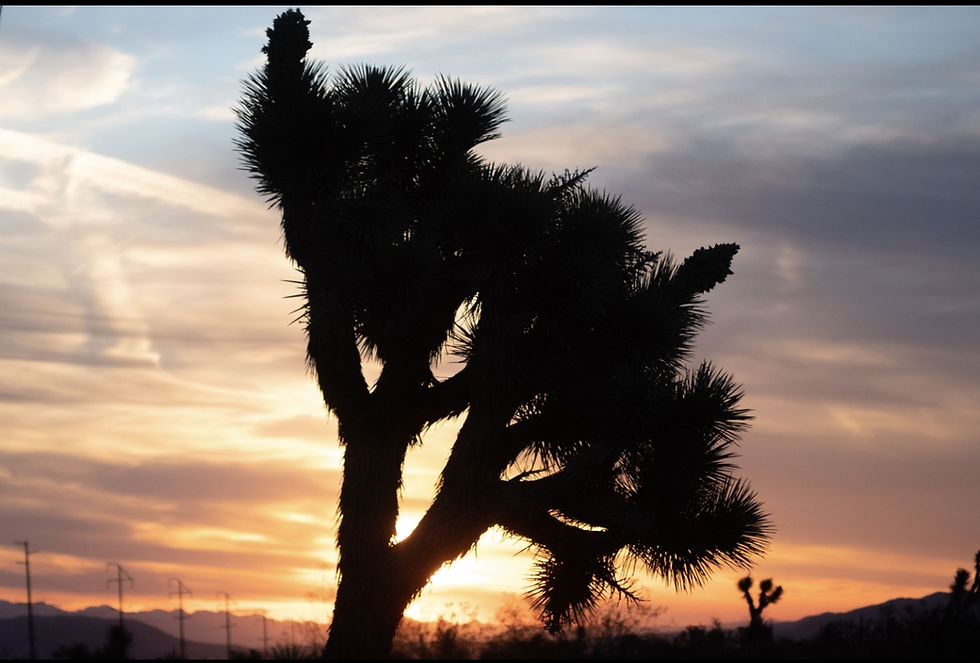Sitting Under a Western Joshua Tree
- Cameron Mayer
- Jun 15, 2022
- 3 min read

On a warm evening in late May of the year 2022, I find myself sitting under a western Joshua tree contemplating its future. Really, it’s the future of all western Joshua trees that is at stake. Make no mistake. This is war. The sizable cloud of smoke, akin to a sickly haze of despair hanging overhead, bears truth to this claim. That the fire originated just outside of the namesake National Park, and furthermore on a day when a rally was being held with a focus on “saving the western Joshua tree”, lends the situation itself a slight of tragic irony.
And so I sit here. I meditate while listening intently to the wind moving hurriedly across the landscape. The Joshua tree above me sways methodically with every powerful gust. It’s striking how fragile this species is. After all, the roots do not even penetrate to a depth required to prevent the entirety of the body from shaking considerably. I look around at the tufts of invasive annual grasses surrounding all the native species. This is a siege. A fire burning through here, and frankly many other similar locations, would be irreparable. The landscape would never look the same again. What happened at Cima Dome provides enough of a relevant example.
It is getting hotter. Climate extremes are increasingly expected. Flora and fauna are increasingly forced to thinning margins of survival. I liken it to existing on the edge of a cliff. When will that decisive push occur? I hope that I never am able to witness it. That hope is unfortunately fading, much like the western Joshua tree’s chances of maintaining itself past this century. The interview I did for my thesis research that stuck with me the most is the one in which a prominent ecologist who has studies Joshua trees for decades and written over 40 books said that many of the current populations in California are “doomed”. This included the “functionally extinct” stands in much of the western Mojave: Red Rock Canyon, Saddleback Butte, elsewhere in the Antelope and Victor valleys. The Morongo Basin and most of the National Park too. Lee Flat in Death Valley could be spared if we’re lucky. All is not lost however. The ideal aspect of uncertainty is that we have license to figure that matters are worse than they actually are.
And so once more, I sit here, under a western Joshua tree as the sun fades below the horizon and its soft glow becomes ever muted in the darkening desert, calling for the California Fish and Game Commission to be on the right side of history. This means permanently extending California Endangered Species Act protections for the western Joshua tree. Believe the logic, the science, and the people doing the hard work on the ground, not the flawed report put out by the California Fish and Wildlife department. That is what I implore. To the powers that be. To whomever or whatever I can. We will make a difference together. Grassroots efforts that take an unreasonable time to manifest what is desired are always the most satisfying to engage with. In this world, it is worthwhile to simply care. Find something to believe in, and get involved. Give everything you’ve got. There’s not always enough care and effort to go around these days. But those of us who cannot stop, who cannot let life and the issues of our time pass us by, who feel a need from deep within to take part in something greater than any individual effort, stand united in the face of a barrier of opposition surely insurmountable. And we state, emphatically, that we will continue the fight for a better world. One species at a time. It’s the least we can do for that which depends on us. Save the western Joshua tree!







Comments